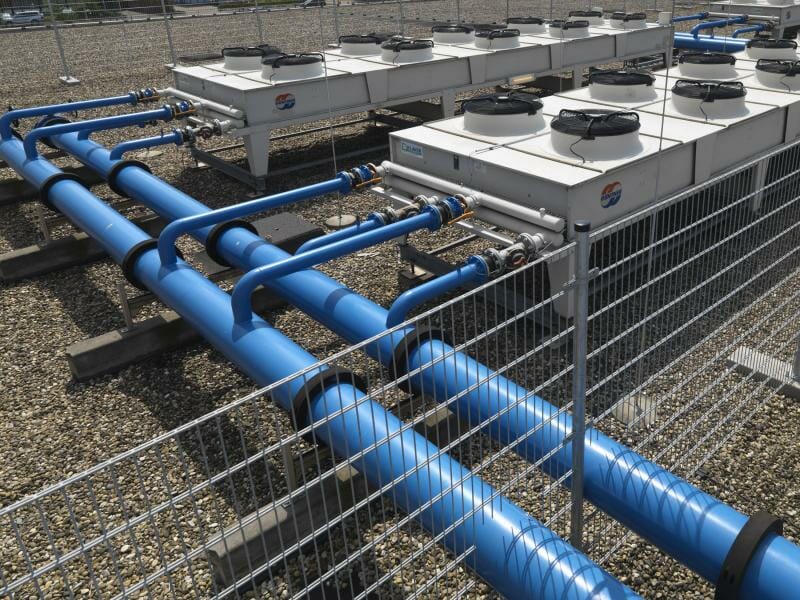Defining Free Cooling and the Future of Airflow Management9 min read

As your data center evolves, your requirements around cooling, power consumption, resource utilization, will all change. This means continuously evaluating your environmental control methodologies and looking at ways to improve it all. But is that really happening today?
Recently, Digital Realty Trust, quizzed 300 IT decision-makers at large corporations in North America, each with annual revenue of at least US$1 billion or with at least 5,000 employees. What did the survey show? The results revealed an average PUE (Power Usage Effectiveness) score of 2.8; where 89 percent of respondents were aware of their data center PUE rating, which averaged 2.8. Ouch. Here’s what else the survey showed: Less than 20% of respondents reported having a PUE of less than 2.0, while 9% had a PUE of 4.0 or greater.
So what can you do to improve those numbers a bit? How can you increase the efficiency of your data centers and allow your equipment to run more optimally? Let’s take a look at the evolution of data center economizers and how free cooling has made an impact.
Understanding Free Cooling
Did you know that free cooling is now virtually mandated by the requirements of ASHRAE 90.1 – 2010? Did you also know that free cooling helps save energy and will pretty much be deployed within all data center environments? The cost structure is the real impact of this kind of technology. The kinds of cost savings you’ll achieve from deploying this kind of energy efficiency technology will help offset the capital costs of deploying it in the first place.
So what is free cooling and how does it impact your data center? Gartner goes on to define free cooling as any technique used to reduce the energy consumed by cooling systems or the time that the cooling units run by using the outside temperature of air or water to cool the data center or other facilities. Generally, it comes from the use of air-side and water-side economizers. From there, air-side economizers work in two ways. Mainly, they use direct fresh-air cooling by filtering (and possibly adjusting the humidity of) outside air, which is piped in to cool the data center. In cold climates, it may even be warmed by the hot air being expelled, so as not to be too cold. Air-side economizers can also work without bringing direct air into the data center, but by heat transference from warmer inside air to cooler outside air.
That means for now, water-side free cooling will probably be a popular choice. However we are seeing more air-side installations happen as well. Here’s the cool part – because of higher operating temperatures within the data center, operators will be able to adopt more free cooling solutions. Not just that, they’ll be able to do so in more diverse climates than ever before.
What does the future hold?
There’s an important point to remember when it comes to data center environmental controls. In many cases, data centers are trying to completely revolutionize their cooling technologies. Rather, they’re working to employ existing technologies in better ways to directly improve efficiency. Free cooling and higher operating temperatures do much to reduce data center power consumption. However, organizations must take the time to actually deploy these technologies.
Remember, there are big pluses to deploying an efficiency cooling system. A recent study shows how the advantages of a 100% free cooled data center are the savings in air-conditioning equipment, and monthly electrical bills for operating air-conditioners. And, you’re also allowing your gear and infrastructure to operate more efficiently.
If you’re in the mix of those with a data center that could use a bit more efficiency, looking at free cooling might be a great option. One big piece of advice is this – before you begin any data center project or retrofit of your cooling platform, make sure to do a comprehensive analysis of your systems power consumption. Gather all of the metrics and required statistics to ensure that your deployment not only goes smooth – but also has the best ROI. Ultimately, you’ll begin to see you PUE go down, your cost savings go up, and enjoy an overall more efficient data center infrastructure.

1 Comment
Submit a Comment
Airflow Management Awareness Month
Free Informative webinars every Tuesday in June.
“Free Cooling” systems are also available that use refrigerant economizers that are as efficient as air-side or water-sided economizers and have additional benefits of 1) not supplying outside air into the space and 2) not requiring any water.